 Facebook
Facebook
 X
X
 Instagram
Instagram
 TikTok
TikTok
 Youtube
Youtube
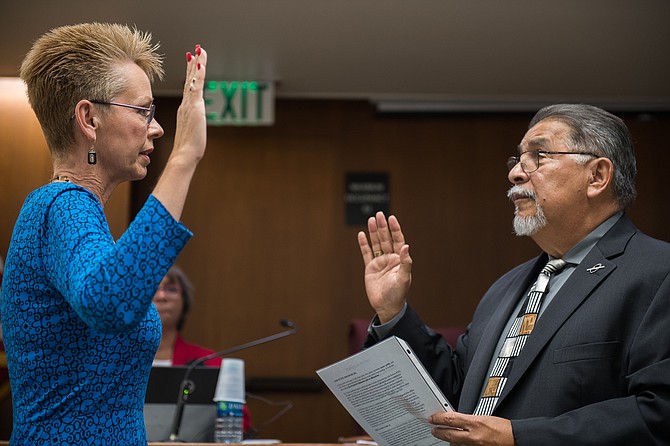
White college kids in Rancho Bernardo get a real campus. But the Latinos and Native Americans near Fallbrook get trailer park classrooms.
That was the gist of an outburst given by board member John Halcon at the May 12 meeting of the Palomar College Governing Board. He was reacting to Palomar’s acting superintendent/president Jack Kahn who had just told his elected board how the last of the Measure M bond money should be spent. The passage of Measure M in 2006 gave Palomar $694million to spend on capital improvements.
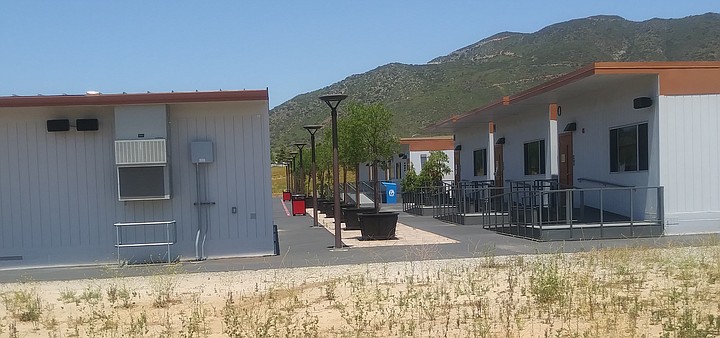
“What we have is a trailer park there,” Halcon says of the Palomar North campus which is a collection of some 12 rented modular buildings east of Fallbrook and south of Rainbow. He was outraged that of the $151 million Measure M still unspent, President Kahn was suggesting that just $10 million be spent on Palomar North. That Fallbrook campus would get no permanent structures based on President Kahn's proposals. But they would provide new landscaping, paving, expanded front porches, signage and some new “shade structures” to complement the existing pre-fab classrooms.
“It will be viewed as a slum,” Halcon said from his home during the Zoomed-in board meeting. He says the Hispanics of Fallbrook and the Native Americans from the nearby Pala Reservation who attend Palomar North will be slighted. “We are short-changing the minority community in North County San Diego.”
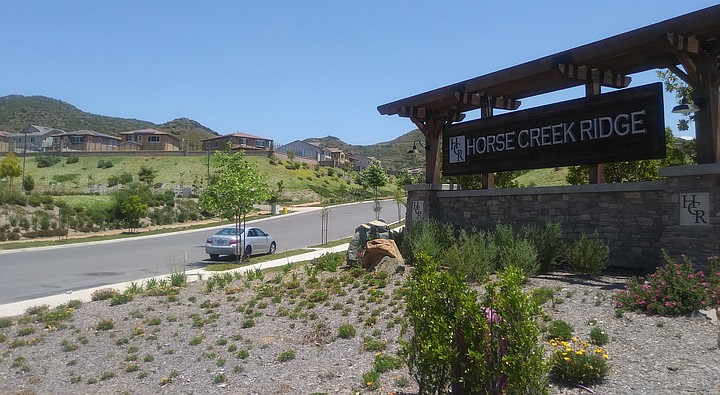
Kahn explained how he relied on input from Palomar's “executive cabinet” and "strategic planning council" for direction. He says it was decided that of the major projects currently being considered, it would be better to either spend $54.5 million on a student center or $65 million on an athletic center/kinesiology complex to be built at Palomar’s main San Marcos campus.
“I represent Fallbrook and Bonsall,” explains trustee Norma Miyamoto of Fallbrook. “The main reason I ran was to make sure the Fallbrook and Bonsall communities did not get stuck with the modular village commonly referred to as a trailer park.”
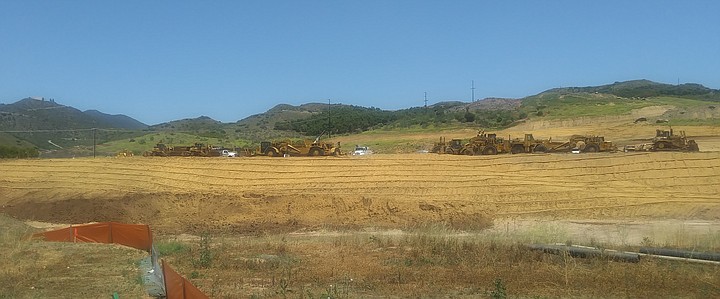
Miyamoto, a former college administrator, told how the Palomar’s satellite campus at Rancho Bernardo is “…a beautiful, state-of-the-art facility. Rancho Bernardo being more of a college-bound community with a more white and Asian population. We wouldn’t dare settle for an interim village in that community. And yet here in Fallbrook, with a high amount of Latino communities and Native American population, we’re feeling comfortable offering that as a possible community. That gives me cause for concern.”
Palomar’s Rancho Bernardo campus received $72.5million for new construction from Measure M.
“We made a commitment to that [Fallbrook] center and modules don’t qualify as a center,” said trustee Mark Evilsizer agreeing with Halcon and Miyamoto.
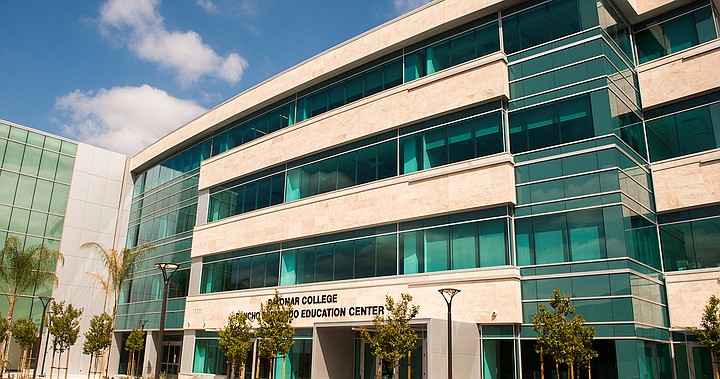
The meeting seemed surreal since it often appeared as if acting president Kahn was acting independent of the five member Palomar board of trustees. That board oversees the president. “Jack, I made clear to you my opposition, yet none of the board members were ever invited to participate in that discussion,” says Halcon about the meetings where Kahn decided to keep the Fallbrook campus in portable buildings.
When pressed by trustee Halcon, President Kahn admitted that 19 new buildings have been built on the main San Marcos campus including a theater arts complex ($22.7million) and a new library ($67million).
“We build 19 new buildings on the main campus and we build trailers on the North Center,” says Halcon.” (Actually the modular classrooms are rented by Palomar at $615,200 a year.)
President Kahn said the issue of not building the Fallbrook campus is not connected to race. “Keep in mind, [main campus] San Marcos has almost the same proportion of students of color as Fallbrook. Our logic is we want to put the infrastructure on the main campus to have the biggest impact on the largest number of students. Our main campus is predominantly students of color.”
The bigger question may be: Why is Palomar College even on this building campaign?
“The main campus is losing students each year,” says Halcon.
Palomar College (including satellite campuses) was once projected to have 47,500 students enrolled by the year 2022. Its enrollment peaked at 31,519 in 2009 and is approximately 30,000 now. Palomar says it had 269 full-time students in the Fall of 2019.
Teresa Platt lives two miles west from Palomar’s Fallbrook campus. She helped create the community group Save Gird Valley which worked on defeating Measure EE in 2018. That $38 million bond measure would have built a new high school on Gird Road in Bonsall. “It was the sixth time the community had voted no to building a new school in that location. We know we’re in a long-term declining trend for student populations per the state of California.”
Platt says all school districts need to adjust to the fact that newly abandoned retail property would make great classroom space. “Leadership should be cautious in constructing expensive new buildings on valuable raw land in North County when we’re seeing a whole new volume of square footage coming on-line in retail dead zones. And they are conveniently located along transportation corridors.”
Besides, she says, education itself is changing. “We’re not learning like we used to. We are continuing to learn but we don’t need to drive to a campus. Palomar has to compete with MasterClass.com, Khan Academy.org, Lynda.com and a myriad of other online and niche learning experiences.”
Palomar North is east of I-15, about a mile north of Highway 76 on Horse Ranch Creek Road. The site includes 80 acres of which 54 are available for development. It has 18 modular buildings. Immediately across the street is the massive Horse Creek Ridge development. When finished, there will be 741 new foothill homes in the $450,000-$600,000 range that did not exist two years ago. Some are already completed. Nearby is the separate Promenade at Horse Creek Road development which will yield more homes in the $600,000 range.
“Every time you build a new school you trigger new development around it," says Platt. "New schools and new development go hand in hand. They call it ‘school sprawl.’ That’s why re-purposing existing retail buildings makes a lot of sense. Instead of breaking new ground on raw land, you just change how existing buildings function instead of letting them sit vacant for ten years.”
Palomar's acting president Kahn was chided for not having population projections provided by SANDAG (The San Diego Association of Governments) or a similar agency. At future meetings, Miyamoto says she wants, “Data, data, data,” so the board can decide how to best spend the rest of the Measure M bond money. “I don’t believe this evening’s presentation will get us to where we need to be.” Miyamoto pointed that architectural plans have already been created for the new Palomar Fallbrook campus. The first building is designed to be 80,675 square feet. Miyamoto says that a re-design with less expensive buildings may be appropriate.
“I need more data, numbers and facts,” trustee Nina Deerfield agreed. “I want to know how many students go where. We have not yet been given enough data.” She admitted Kahn did not present the board with those numbers. The item is tentatively set to be revisited at the June 9 board meeting.
Kahn became Palomar’s acting superintendent/president in December when Joi Lin Blake resigned. No reason was given, but Blake was criticized for spending $1 million of bond money on her office suite. A state report released in November 2019 stated Palomar could go broke within two years. Blake's official resignation takes effect June 30.
Click here to see May 12 board meeting.


White college kids in Rancho Bernardo get a real campus. But the Latinos and Native Americans near Fallbrook get trailer park classrooms.
That was the gist of an outburst given by board member John Halcon at the May 12 meeting of the Palomar College Governing Board. He was reacting to Palomar’s acting superintendent/president Jack Kahn who had just told his elected board how the last of the Measure M bond money should be spent. The passage of Measure M in 2006 gave Palomar $694million to spend on capital improvements.

“What we have is a trailer park there,” Halcon says of the Palomar North campus which is a collection of some 12 rented modular buildings east of Fallbrook and south of Rainbow. He was outraged that of the $151 million Measure M still unspent, President Kahn was suggesting that just $10 million be spent on Palomar North. That Fallbrook campus would get no permanent structures based on President Kahn's proposals. But they would provide new landscaping, paving, expanded front porches, signage and some new “shade structures” to complement the existing pre-fab classrooms.
“It will be viewed as a slum,” Halcon said from his home during the Zoomed-in board meeting. He says the Hispanics of Fallbrook and the Native Americans from the nearby Pala Reservation who attend Palomar North will be slighted. “We are short-changing the minority community in North County San Diego.”

Kahn explained how he relied on input from Palomar's “executive cabinet” and "strategic planning council" for direction. He says it was decided that of the major projects currently being considered, it would be better to either spend $54.5 million on a student center or $65 million on an athletic center/kinesiology complex to be built at Palomar’s main San Marcos campus.
“I represent Fallbrook and Bonsall,” explains trustee Norma Miyamoto of Fallbrook. “The main reason I ran was to make sure the Fallbrook and Bonsall communities did not get stuck with the modular village commonly referred to as a trailer park.”

Miyamoto, a former college administrator, told how the Palomar’s satellite campus at Rancho Bernardo is “…a beautiful, state-of-the-art facility. Rancho Bernardo being more of a college-bound community with a more white and Asian population. We wouldn’t dare settle for an interim village in that community. And yet here in Fallbrook, with a high amount of Latino communities and Native American population, we’re feeling comfortable offering that as a possible community. That gives me cause for concern.”
Palomar’s Rancho Bernardo campus received $72.5million for new construction from Measure M.
“We made a commitment to that [Fallbrook] center and modules don’t qualify as a center,” said trustee Mark Evilsizer agreeing with Halcon and Miyamoto.

The meeting seemed surreal since it often appeared as if acting president Kahn was acting independent of the five member Palomar board of trustees. That board oversees the president. “Jack, I made clear to you my opposition, yet none of the board members were ever invited to participate in that discussion,” says Halcon about the meetings where Kahn decided to keep the Fallbrook campus in portable buildings.
When pressed by trustee Halcon, President Kahn admitted that 19 new buildings have been built on the main San Marcos campus including a theater arts complex ($22.7million) and a new library ($67million).
“We build 19 new buildings on the main campus and we build trailers on the North Center,” says Halcon.” (Actually the modular classrooms are rented by Palomar at $615,200 a year.)
President Kahn said the issue of not building the Fallbrook campus is not connected to race. “Keep in mind, [main campus] San Marcos has almost the same proportion of students of color as Fallbrook. Our logic is we want to put the infrastructure on the main campus to have the biggest impact on the largest number of students. Our main campus is predominantly students of color.”
The bigger question may be: Why is Palomar College even on this building campaign?
“The main campus is losing students each year,” says Halcon.
Palomar College (including satellite campuses) was once projected to have 47,500 students enrolled by the year 2022. Its enrollment peaked at 31,519 in 2009 and is approximately 30,000 now. Palomar says it had 269 full-time students in the Fall of 2019.
Teresa Platt lives two miles west from Palomar’s Fallbrook campus. She helped create the community group Save Gird Valley which worked on defeating Measure EE in 2018. That $38 million bond measure would have built a new high school on Gird Road in Bonsall. “It was the sixth time the community had voted no to building a new school in that location. We know we’re in a long-term declining trend for student populations per the state of California.”
Platt says all school districts need to adjust to the fact that newly abandoned retail property would make great classroom space. “Leadership should be cautious in constructing expensive new buildings on valuable raw land in North County when we’re seeing a whole new volume of square footage coming on-line in retail dead zones. And they are conveniently located along transportation corridors.”
Besides, she says, education itself is changing. “We’re not learning like we used to. We are continuing to learn but we don’t need to drive to a campus. Palomar has to compete with MasterClass.com, Khan Academy.org, Lynda.com and a myriad of other online and niche learning experiences.”
Palomar North is east of I-15, about a mile north of Highway 76 on Horse Ranch Creek Road. The site includes 80 acres of which 54 are available for development. It has 18 modular buildings. Immediately across the street is the massive Horse Creek Ridge development. When finished, there will be 741 new foothill homes in the $450,000-$600,000 range that did not exist two years ago. Some are already completed. Nearby is the separate Promenade at Horse Creek Road development which will yield more homes in the $600,000 range.
“Every time you build a new school you trigger new development around it," says Platt. "New schools and new development go hand in hand. They call it ‘school sprawl.’ That’s why re-purposing existing retail buildings makes a lot of sense. Instead of breaking new ground on raw land, you just change how existing buildings function instead of letting them sit vacant for ten years.”
Palomar's acting president Kahn was chided for not having population projections provided by SANDAG (The San Diego Association of Governments) or a similar agency. At future meetings, Miyamoto says she wants, “Data, data, data,” so the board can decide how to best spend the rest of the Measure M bond money. “I don’t believe this evening’s presentation will get us to where we need to be.” Miyamoto pointed that architectural plans have already been created for the new Palomar Fallbrook campus. The first building is designed to be 80,675 square feet. Miyamoto says that a re-design with less expensive buildings may be appropriate.
“I need more data, numbers and facts,” trustee Nina Deerfield agreed. “I want to know how many students go where. We have not yet been given enough data.” She admitted Kahn did not present the board with those numbers. The item is tentatively set to be revisited at the June 9 board meeting.
Kahn became Palomar’s acting superintendent/president in December when Joi Lin Blake resigned. No reason was given, but Blake was criticized for spending $1 million of bond money on her office suite. A state report released in November 2019 stated Palomar could go broke within two years. Blake's official resignation takes effect June 30.
Click here to see May 12 board meeting.
Comments